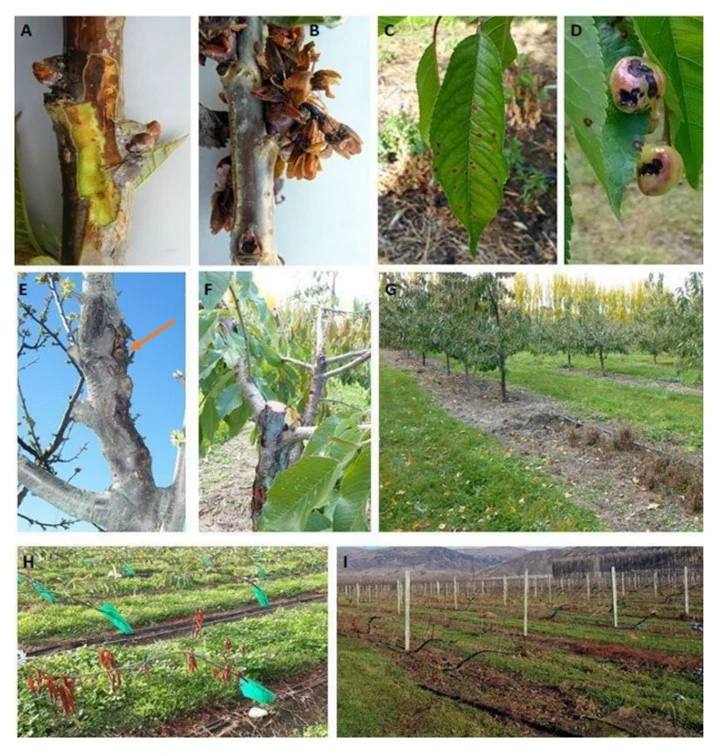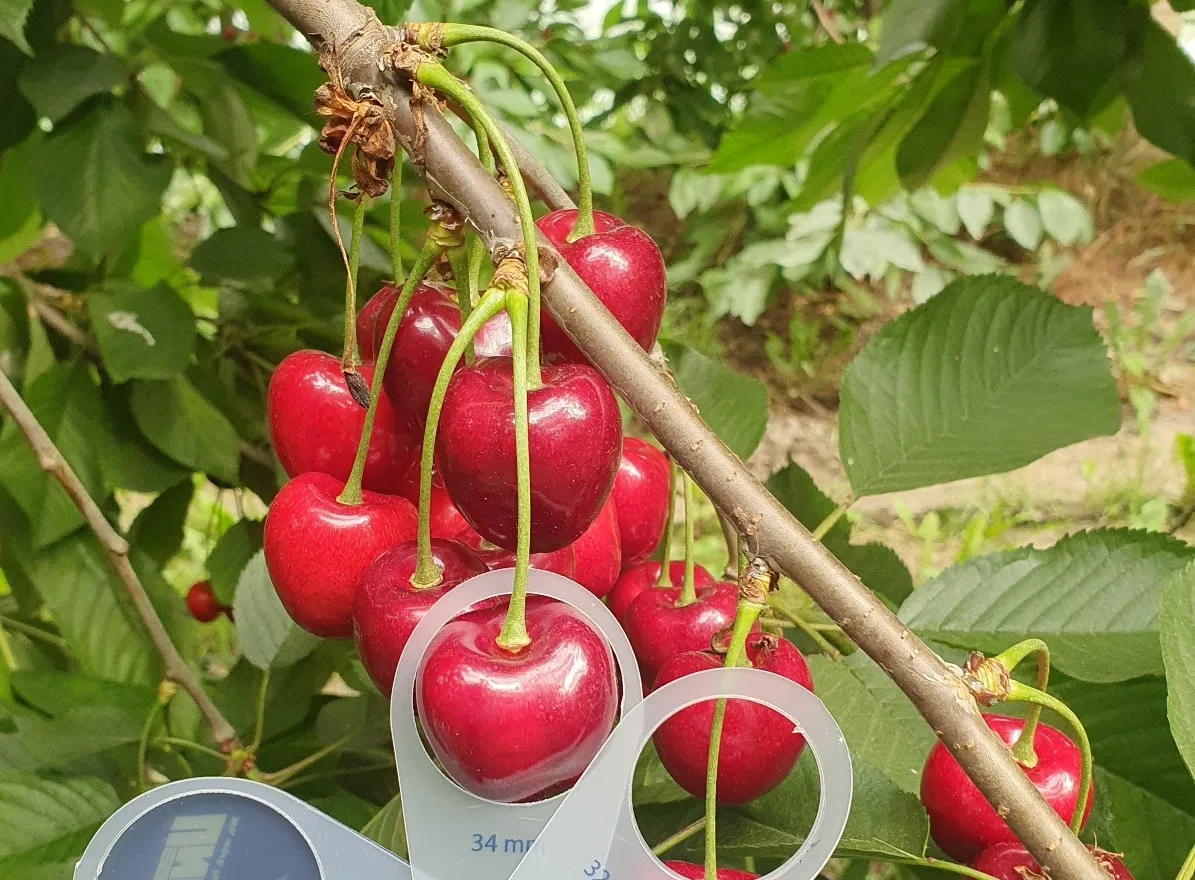Bacterial canker of sweet cherry in New Zealand
Sweet cherry bacterial canker, caused by various strains of Pseudomonas syringae, is one of the most significant bacterial diseases worldwide. A recent scientific article reviewed and analyzed studies on the Pseudomonas syringae pathovars responsible for bacterial canker in New Zealand, identifying them and examining their infection process, virulence factors, epidemiology, symptoms, and management strategies.
Among the six known P. syringae pathovars that cause bacterial canker in Prunus species, P. s. pv. syringae (Pss), P. s. pv. morsprunorum race 1 (Psm1), and P. s. pv. persicae have been reported in New Zealand, with Pss and Psm1 being responsible for infections in sweet cherry.
Pss is a genetically heterogeneous pathovar capable of infecting over 180 host species, including herbaceous and fruit crops. The most common symptoms include extensive canker formation and gummosis, leading to the progressive decline of trees, which may result in branch dieback or even plant death.
Impact and disease progression
In young orchards in New Zealand, losses range from 20% to 50%, sometimes requiring the removal of entire cherry blocks. Over the past fifteen years, advanced sequencing techniques and molecular methods have improved the identification of P. syringae strains and the understanding of their interactions with plant tissues.
The way bacterial canker manifests depends on the characteristics of different strains, likely due to variations in virulence factors that influence the bacterium’s ability to colonize the plant, persist in tissues, and cause symptoms of varying severity.
To establish itself in plant tissue, P. syringae must overcome plant defense mechanisms, including constitutive and induced immune responses. The bacterium employs three main virulence strategies: the production of phytotoxins, the secretion of effector proteins through the type III secretion system, and the ice nucleation activity.
Challenges in disease control
 Figure 1. Symptoms of bacterial canker on sweet cherry. A buds that failed to break in spring with production of gum exudates and browning of underlying tissue; B blossom blast can also occur in spring particularly after a frost or following periods of wet and cold weather; C bacterial leaf spot; D necrotic lesions on fruits are sometimes observed in spring; E cankers on leader branch of a mature tree (red arrow); F loss of the leader branch due to bacterial canker on a mature tree; G whole trees are sometimes removed in mature orchards due to bacterial canker; H systemic invasion and collapse of a 2-year old tree; I removal of trees in a newly established block due to bacterial canker.
Figure 1. Symptoms of bacterial canker on sweet cherry. A buds that failed to break in spring with production of gum exudates and browning of underlying tissue; B blossom blast can also occur in spring particularly after a frost or following periods of wet and cold weather; C bacterial leaf spot; D necrotic lesions on fruits are sometimes observed in spring; E cankers on leader branch of a mature tree (red arrow); F loss of the leader branch due to bacterial canker on a mature tree; G whole trees are sometimes removed in mature orchards due to bacterial canker; H systemic invasion and collapse of a 2-year old tree; I removal of trees in a newly established block due to bacterial canker.
Sweet cherry bacterial canker is challenging to control, both due to the limited availability of chemical treatments and the bacterium's ability to reside within plant tissues, making it difficult to target.
The use of copper-based compounds is increasingly restricted due to bacterial resistance, phytotoxicity, and environmental concerns. Some studies have tested biological control methods using antagonistic bacteria and bacteriophages, but with modest success.
Similarly, breeding for resistant cultivars is complex due to the high genetic diversity among P. syringae strains. However, some accessions with partial resistance have been identified and are being used in breeding programs.
Environmental factors and future strategies
Environmental factors such as frost play a crucial role in the spread of the disease. Freezing and thawing cycles in cambial tissue promote lesion formation on the trunk, creating ideal entry points for bacteria, along with pruning wounds, insect damage, and leaf scar sites.
Recent studies have shown that protecting tree trunks with coatings or white latex paint can significantly reduce bacterial canker incidence. Other predisposing factors include soil type and agronomic practices: very sandy or clayey soils, as well as excessive fertilization and irrigation in late summer, can increase susceptibility to infection.
Looking ahead, research is focusing on developing strain-specific molecular diagnostic tools to monitor the spread of bacterial canker in orchards. The ability to rapidly detect and quantify Pseudomonas populations will enable more targeted and efficient management strategies.
At the same time, it is crucial to develop and integrate biocontrol methods with sustainable agronomic practices and genetic improvement efforts to introduce resistant varieties for disease containment. Advancing these research areas will be fundamental to ensuring a sustainable and long-lasting sweet cherry production industry worldwide.
Source text and images: Marroni, M. V., Casonato, S., Pitman, A. R., Visnovsky, S. B., Beresford, R. M., & Jones, E. E. (2024). Review of Pseudomonas species causing bacterial canker of Prunus species with emphasis on sweet cherry (Prunus avium) in New Zealand. European Journal of Plant Pathology, 168(2), 297-314. https://doi.org/10.1007/s10658-023-02755-3
Andrea Giovannini
University of Bologna
Cherry Times - Tutti i diritti riservati













